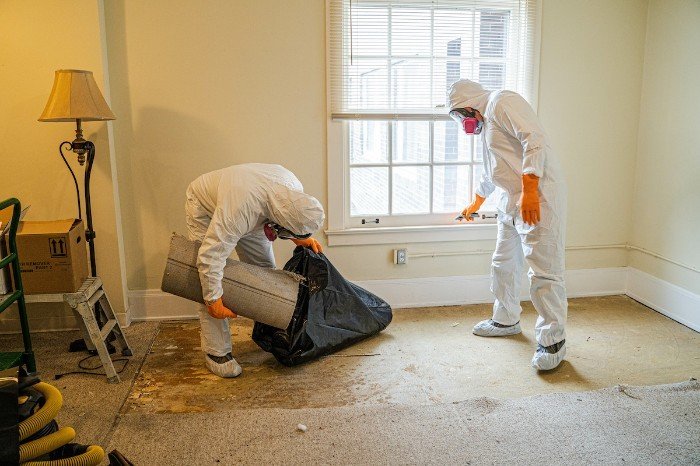Cleaning up a crime scene is a meticulous process that requires specialized knowledge, equipment, and procedures. Contact Us.
Crime scene cleanup is a critical task that goes beyond simple cleaning. It involves the removal of biohazards, restoration of the site, and compliance with legal and health standards. Understanding the key steps to clean up a crime scene is vital for professionals in this field and those interested in the process.
What is the first step?
The first step is to secure the scene and conduct a thorough risk assessment to identify potential hazards.
Why is personal protective equipment (PPE)?
PPE is essential for protecting cleanup professionals from exposure to biohazards, including bloodborne pathogens and chemical hazards.
How are biohazardous materials removed from a crime scene?
Biohazardous materials are meticulously removed using specialized tools and procedures to ensure safe and thorough decontamination.
What is the role of odor removal in crime scene cleanup?
Odor removal involves identifying and eliminating sources of odor, followed by the application of odor neutralizers to ensure the area smells clean and fresh.
Why is final inspection and clearance important in crime scene cleanup?
Final inspection and clearance confirm that the area has been thoroughly cleaned and is safe for occupancy and use, ensuring compliance with health and safety regulations.
What should be included in the documentation of crime scene cleanup?
Documentation should include records of the materials used, the procedures followed, and any incidents that occurred, ensuring accountability and compliance with legal requirements.
Understanding Crime Scene Cleanup
Crime scene cleanup, also known as biohazard remediation, involves the cleaning and decontamination of areas affected by violent crimes, accidents, or other traumatic events. It requires adherence to strict protocols to ensure the safety of cleanup professionals and the general public.
Secure the Scene
The first step in crime scene cleanup is to secure the area. This involves working with law enforcement to ensure that the scene is safe and that all forensic evidence has been collected. Ensuring that the area is free from immediate dangers is crucial for the safety of the cleanup team.
Conduct a Risk Assessment
A thorough risk assessment is essential to identify potential hazards. This includes assessing the presence of bloodborne pathogens, chemical hazards, and structural damage. The risk assessment helps in planning the cleanup process and determining the necessary safety measures.
Personal Protective Equipment (PPE)
Wearing the right personal protective equipment (PPE) is critical in protecting cleanup professionals from exposure to biohazards. PPE typically includes gloves, gowns, masks, face shields, and respiratory protection. The selection of PPE depends on the specific hazards present at the scene.
Ensure Proper PPE Usage
Proper usage and disposal of PPE are essential to prevent contamination. Cleanup professionals must be trained in donning and doffing PPE correctly and disposing of it in biohazard waste containers.
Cleaning and Disinfection Procedures
The initial phase of cleaning involves the removal of biohazardous materials such as blood, bodily fluids, and tissue. This process must be done meticulously to ensure that all contaminants are safely removed from the scene.
Cleaning and Disinfecting Surfaces
Once biohazardous materials are removed, surfaces need to be thoroughly cleaned and disinfected. This involves using EPA-approved disinfectants that are effective against a wide range of pathogens. Special attention must be given to high-touch areas and hidden surfaces where contaminants may linger.
Use of Specialized Equipment
Specialized equipment such as HEPA vacuums, steam cleaners, and foggers may be used to ensure thorough cleaning and disinfection. These tools help in reaching difficult areas and ensuring that all contaminants are eradicated.
Cleaning up a crime scene is a complex and sensitive task that requires specialized knowledge, equipment, and procedures. By following the key steps outlined in this article, professionals can ensure that the cleanup is thorough, safe, and compliant with all legal and health regulations. Understanding and adhering to these steps is crucial for protecting the health and safety of both the cleanup team and the general public.

